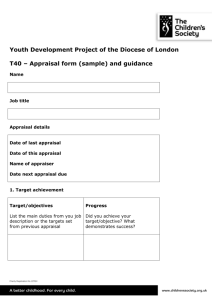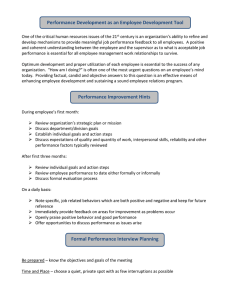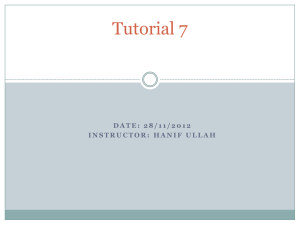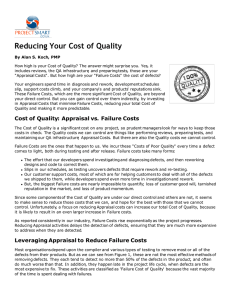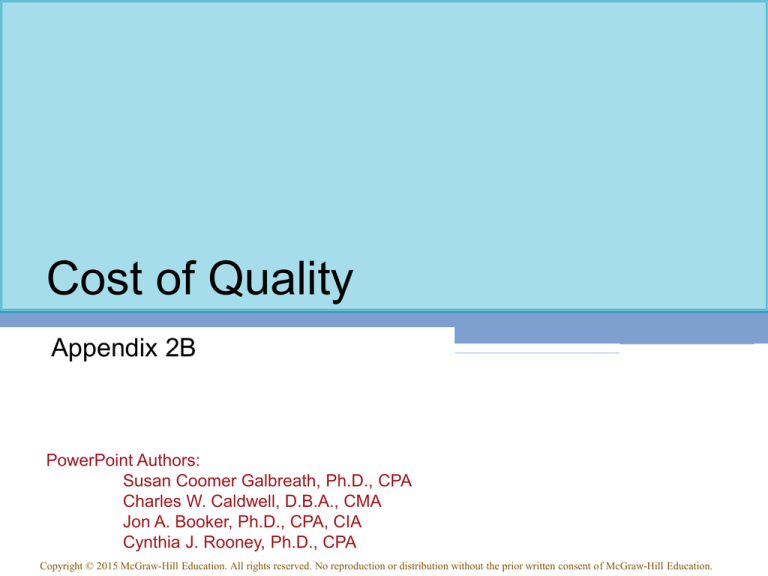
Cost of Quality
Appendix 2B
PowerPoint Authors:
Susan Coomer Galbreath, Ph.D., CPA
Charles W. Caldwell, D.B.A., CMA
Jon A. Booker, Ph.D., CPA, CIA
Cynthia J. Rooney, Ph.D., CPA
Copyright © 2015 McGraw-Hill Education. All rights reserved. No reproduction or distribution without the prior written consent of McGraw-Hill Education.
2B-2
Quality of Conformance
Costs incurred to prevent defects or that
result from defects in products are known as
quality costs. Many companies are working
hard to reduce their quality costs.
When the overwhelming majority of products
produced conform to design specifications
and are free from defects.
2B-3
Prevention and Appraisal Costs
Prevention
Costs
Support activities
whose purpose is to
reduce the number of
defects
Appraisal Costs
Incurred to identify
defective products
before the products are
shipped to customers
2B-4
Internal and External Failure Costs
Internal Failure
Costs
Incurred as a result of
identifying defects
before they are shipped
External Failure
Costs
Incurred as a result of
defective products
being delivered to
customers
2B-5
Examples of Quality Costs
Prevention Costs
• Quality training
• Quality circles
• Statistical process
control activities
Internal Failure Costs
• Scrap
• Spoilage
• Rework
Appraisal Costs
• Testing and inspecting
incoming materials
• Final product testing
• Depreciation of testing
equipment
External Failure Costs
• Cost of field servicing and
handling complaints
• Warranty repairs
• Lost sales
2B-6
Distribution of Quality Costs
2B-7
Quality Cost Report
For Years 1 and 2
Year 2
Amount
Percent*
Prevention costs:
Systems development
Quality training
Supervision of prevention activities
Quality improvement
Total prevention cost
$
400,000
210,000
70,000
320,000
1,000,000
0.80% $
0.42%
0.14%
0.64%
2.00%
Appraisal costs:
Inspection
Reliability testing
Supervision of testing and inspection
Depreciation of test equipment
Total appraisal cost
600,000
580,000
120,000
200,000
1,500,000
Internal failure costs:
Net cost of scrap
Rework labor and overhead
Downtime due to defects in quality
Disposal of defective products
Total internal failure cost
900,000
1,430,000
170,000
500,000
3,000,000
External failure costs:
Warranty repairs
Warranty replacements
Allowances
Cost of field servicing
Total external failure cost
Total quality cost
400,000
870,000
130,000
600,000
2,000,000
7,500,000
$
Year 1
Amount
Percent*
270,000
130,000
40,000
210,000
650,000
0.54%
0.26%
0.08%
0.42%
1.30%
1.20%
1.16%
0.24%
0.40%
3.00%
560,000
420,000
80,000
140,000
1,200,000
1.12%
0.84%
0.16%
0.28%
2.40%
1.80%
2.86%
0.34%
1.00%
6.00%
750,000
810,000
100,000
340,000
2,000,000
1.50%
1.62%
0.20%
0.68%
4.00%
900,000
2,300,000
630,000
1,320,000
5,150,000
9,000,000
1.80%
4.60%
1.26%
2.64%
10.30%
18.00%
0.80%
1.74%
0.26%
1.20%
4.00%
15.00% $
* As a percentage of total sales. In each year sales totaled $50,000,000.
Quality cost
reports provide
an estimate of
the financial
consequences
of the
company’s
current defect
rate.
2B-8
Quality Cost Reports in Graphic Form
$10
20
Quality Cost (in millions)
8
7
6
External
Failure
External
Failure
5
Internal
Failure
4
3
Internal
Failure
2
1
0
Appraisal
Appraisal
Quality
reports
can also
be
prepared
in
graphic
form.
18
Quality Cost as a Percentage of Sales
9
16
14
12
Prevention
1
2
Year
External
Failure
10
Internal
Failure
8
6
Internal
Failure
4
2
Prevention
External
Failure
0
Appraisal
Appraisal
Prevention
Prevention
1
2
Year
2B-9
Uses of Quality Cost Information
Help managers see the
financial significance of
defects.
Help managers identify
the relative importance
of the quality problems.
Help managers see
whether their quality
costs are poorly
distributed.
2B-10
Limitations of Quality Cost Information
Simply measuring and
reporting quality cost
problems does not solve
quality problems.
Results usually lag
behind quality
improvement programs.
The most important
quality cost, lost sales, is
often omitted from
quality cost reports.
2B-11
ISO 9000 Standards
Global View
ISO 9000 standards have become
international measures of quality.
To become ISO 9000 certified, a
company must demonstrate:
1. A quality control system is in use, and the system
clearly defines an expected level of quality.
2. The system is fully operational and is backed up with
detailed documentation of quality control procedures.
3. The intended level of quality is being achieved on a
sustained basis.
2B-12
End of Appendix 2B







